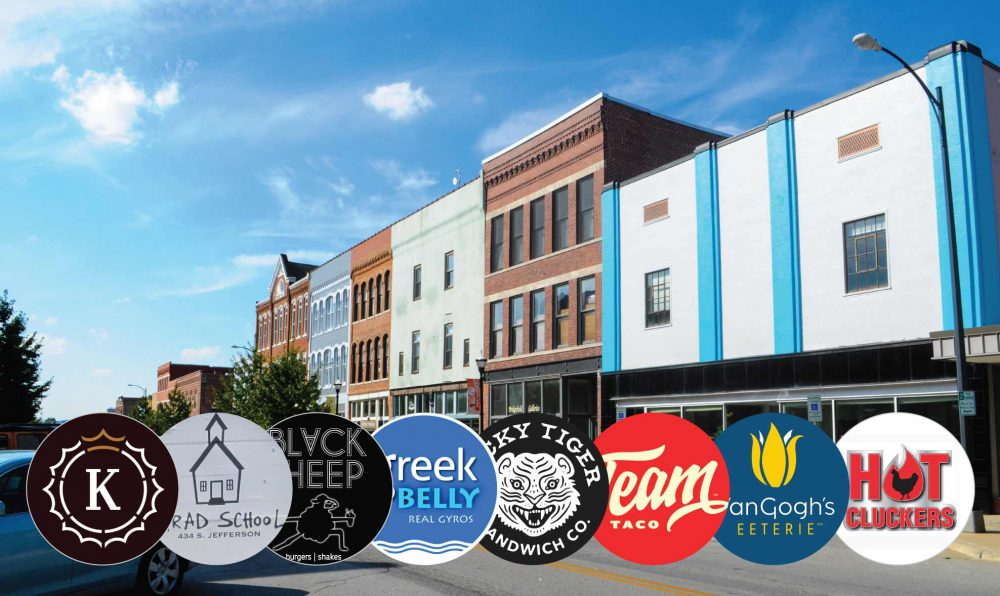The Ultimate Guide: How to Start a Restaurant
March 13, 2019
Jeremy Wells
How to Start a Restaurant
If you’ve looked around online about how to start a restaurant, it’s likely that you’ve seen an article or two talking about all the reasons you should not even try.
But don’t listen to these naysayers — it’s your dream, so go for it. Even after hearing all of these arguments of these pessimists, if you’re still excited about pursuing your dreams of being a restaurant owner, then we’ve got the perfect step-by-step guide that you’ll need for starting a successful restaurant.
Three Foundations of Opening a Restaurant
Before you get hung up on too many ideas, focus on these three foundations of starting a restaurant:
- Pick a Relevant Concept.
- Hire the Right Chef.
- Location, Location, Location.
There’s nothing that can ever really prepare you for starting a restaurant, no matter what type of background or level experience you came from. No matter how much you read, how many videos you watch, how many seminars you go to, there are some things that can only come from the experience of being a restauranteur. However, with this guide, we will do our best to make sure that you are set up for success, and are fully prepared to make the plunge
Finding your perfect Niche
In our experience as both restaurant branding experts and passionate foodies, we know that there are many options out there as far as concepts that you could consider. Each one requiring a certain set of skills in order to keep them running effectively.
As you consider starting your restaurant, try to find opportunities that you can take advantage of. What food, service, or convenience have you found missing? Is there a need in your market that is still unfulfilled?
As you consider these questions, if you find that it’s not meeting your options enough, maybe consider looking at the latest restaurant trends for inspiration.
There are plenty of unique, and fun concepts out there – so there’s no need for you to create something from thin air.
Should You Choose a Franchise?
As you are dreaming about one day opening a restaurant, you might be thinking, “I don’t really want to reinvent the wheel, but there is a big need for a fast and casual Indian joint in my city!”
If that sounds like you, then it might be good to start looking for a franchise opportunity.
The great thing about a franchise is that most of the work has already been done for you. Organizing a menu, conceptualizing interior design, and making a marketing plan from scratch, are all things you don’t have to worry about. Plus, the allure of an already recognizable brand will help draw in customers for you.
The brand recognition that comes with franchise restaurants, as well as a lower failure rate than independently owned restaurants, are all part of the reason franchises are so appealing.
However, just like anything, owning a restaurant franchise has both pros and cons. Despite all the benefits that come with launching a recognizable brand with a proven plan for success already in place, there are a few downsides.
First and foremost, franchises aren’t cheap. Often times you’ll need a large sum of personal assets instead of a loan, and buying the rights the franchise are typically non-refundable.
In addition to this, you don’t have flexibility with the business model, so when it comes to getting creative with running your restaurant, your options are pretty limited. For instance, if your franchise headquarters opts to do a complete overhaul of its decor, then you’ll have to put out the money for it, even if you don’t want to. If you’ve chosen the franchise route, then make sure you consider these things and do some more research into your specific franchise before you dive in.
A Better Business Plan: Crafting a Brand Strategy
In all honesty, when all you want to do is get cooking in the kitchen, crafting unique and delicious recipes, and making your customers happy, the last thing you want to do is slow down and begin writing a business plan.
Nothing sounds less fun than researching, creating spreadsheets, graphing charts and analyzing statistics.
But, before your eyes glaze over and you move on to the “fun” steps of opening a restaurant, you should ask yourself the following:
Would you try and create a dish you’ve never made before without ever even looking at a recipe? No.
Just as a recipe gives you the guidelines, roadmap, and action plan to create a stellar dish, a brand strategy will give you the recipe to make sure your restaurant is set up to win, not fail.
This step is often the difference between a restaurant that will fail or one that will succeed. Or a restaurant that is doomed to make just enough to pay bills or one that is very profitable and successful.
A brand strategy gets you thinking deeper
A brand strategy gets you thinking deeper about the future of your restaurant, the market you’re serving, the risks and challenges you’ll face, and the viability of seeing your ultimate dreams become reality.
When your brand strategy is well thought out and refined, you’ll have a better idea of which steps should come next for you as you are opening your restaurant and pursuing your dream.
Here are the 12 biggest questions you should answer as you are planning for the future of your restaurant:
Decide What kind of restaurant do you want?
There are so many types of restaurants in all shapes, and all sizes. From fast-and-casual concepts to food trucks, to cafes, bars, or major franchises. Step number one is narrowing down your ideas to a specific concept.
Write out a long and short answer to this question, and then get familiar with explaining it to family, friends, investors, lenders, and future customers. This will be like your “elevator pitch” in a way. It’s something you’ll need to practice repeating over and over.
Who is your restaurant for?
Before you can begin getting customers into your doors, you need to know who they are. This is also known as your target market. It’s a group of people who your restaurant is meant to serve.
The more specific you can get, the better. When you know your customer deeply, and intimately, you’ll be able to craft a better menu, design, environment and better overall experience for them.
When you understand your customers’ decision making, their fears, their desires, their motivations – your marketing campaigns will be much more effective and you’ll reach your ideal demographic more easily.
When you make these customer profiles, it’s good to be aware of how many households in the area you plan to serve are in your price point. You’ll need to find a location that is close to customers who can support your prices, and that isn’t already flooded with similar restaurant concepts. This decision is hugely important in the long-term success and growth of your restaurant.
Who are your restaurant’s main competitors?
Many business owners might tell you to never worry about your competition and just run your business with your nose to the ground. Only worry about yourself.
This could be good advice in the sense that you don’t want to mindlessly copy your competition, always worrying about what they’re doing, and trying to mimic them, or “one-up” them. However, when you’re first starting a restaurant it’s vital to know who your primary competitors are in the market.
You’ll want to know how they are similar, and how they are different from your restaurant. Do plenty of research to identify your competitors, as this will save you from the frustrations and failure that can come from creating a restaurant concept that is already too saturated or is positioned poorly against the other options.
Where’s the best location?
You’ve heard it before, “location, location, location.” It’s been said millions of times, yet it still rings true to this day. This step is one of the most important steps in the success of your restaurant.
By now you should have already narrowed down potential locations based on defining your target market and looking at your competition. You should be able to make some smart conclusions from these things.
For instance, it would be silly to put a high-end steakhouse in the middle of a low-income neighborhood.
With the same token, a trendy taco truck probably wouldn’t do well near a gated community of retired elderly people. Although, who knows… everyone loves tacos!
What’s your unique value proposition?
Don’t let this word scare you, it’s not complex, and really all that it means is that you should find what makes you different from your competition.
What is it about your food, your storefront, your atmosphere, your location, your pricing, that makes you unique and stand out among your competitors?
Maybe there’s something special about your specific location, or maybe you offer a very unique customer experience, or maybe the ingredients of your food are locally sourced and organic. There are many ways that your restaurant can stand out amongst the competition, so it’s important to discover this for your own restaurant.
One important factor of discovering and defining a unique value proposition is the menu that you offer. It’s important to test it, even on a small scale. Host tasting parties, or pop up events, leading up to the grand opening of a restaurant. This will allow you to gain important feedback, so you can know how to serve your customers best.
Your menu may change over time, but with a well-defined brand strategy, unique value proposition, and understanding your customers, the menu that you launch with should serve your restaurant well.
How will your customers find your restaurant?
How are you answer this question will be the beginning foundation of your restaurant marketing strategy.
Unfortunately for businesses, especially restaurants, the idea of “if you build it, they will come “doesn’t apply. Simply existing, is usually not enough for a restaurant to survive let alone thrive.
Since you now understand your customer, be thinking of ways that you can connect with him. Will you connect through paid advertising, social media campaigns, rely on word-of-mouth? Word-of-mouth referrals are great but aren’t always enough. You need to have a plan of action of what, and who, you’ll need in order to help get your message out.
Some other ideas for spreading the word could be inviting food bloggers to visit your restaurant, hosting a large grand opening event and inviting the community, and of course ensuring your restaurant is listed on Yelp, OpenTable, and has updated listings on Google and other social platforms.
Also, before you open you want to make sure you have a press kit, Nice photography, a video, and an “about” section of your website ready for any local or national news organizations that show interest.
What resources will your restaurant need?
You’ve heard it said before, it takes money to make money. And the same rings true for restaurants.
You’ll need to know what it will take to open and operate your restaurant. What types of resources will you need? Will you be the head chef, or will you hire a head chef? What type of technology will your restaurant use to process payments, or book reservations online? How many employees will you need? Will you hire an agency specializing in restaurant branding to design your logo, or have your nephew design it?
Take time now to list out all of the expenses your business will incur; both one time and recurring expenses. Be diligent, and as precise as possible.
Don’t forget to search for costs related to other mundane and operational things. Utilities, pest control, cleaning services, laundry services, etc.
If there are other needs that are not related to money, list those out as well.
How will your restaurant make money?
You can have the best idea in the world about what food or service you offer that customers will love, but that doesn’t always mean that your restaurant concepts will succeed and be profitable.
The effort that you put into your business model through developing a brand strategy is often what will determine how successful your restaurant will be. Will you generate just enough revenue to get by? Will you be able to make enough to cover all of your expenses? Will you eventually be able to make more money, and be profitable?
This is often where many restaurants fail because they don’t take the time thinking this through. The average restaurant thinks that simply opening their doors, will mean that the restaurant will make money.
That simply is not the case.
You’ll want to think through things related to the pricing structure of your menu, how you will choose your staff, what sort of insurance and licenses you will have and how much they will cost, and many other tax obligations, and red tape you’ll have to jump through.
How long will it take for your restaurant to make a profit?
It’s typical for a new restaurant to start out with a loss when they first open up, the first year is especially difficult. As you continue to invest in the necessary resources and work towards understanding and acquiring new customers, and work out all the kinks that come with operating a restaurant, there is a learning curve.
However, after some time, if you’ve done your due diligence, you’ll be making a good profit on top of your expenses.
Consider using a revenue forecast model to figure out how long it will take your restaurant to recoup your initial investments, to simply breakeven, and eventually run a profitable business.
What values will you never compromise in running a restaurant?
When you are in the thick of operating a restaurant, it important to be making good decisions at every turn and knowing what you stand for is critical to that.
You should define what values are most important to you, in business and personally. What values do you hold closest to you? What’s something that’s non-negotiable?
Write these values down, and limit them to two or three. This doesn’t mean you can’t have more than two or three values, but as the saying goes, “ if everything is important, then nothing is important.”
Creating and documenting these core values at the start will help you in your decision making, your operations, and every decision you make for your restaurant. From choosing the right vendor to how your menu should evolve over time, or critical decisions during pivotal times.
What’s your staffing plan?
Great service makes food taste even better.
It’s important to have skilled, hard-working, and qualified staff. And this begins with finding great candidates.
You can certainly find candidates through the usual means of job boards and website listings, and there’s always the classic sign in the window approach. However, finding the best quality team members is often achieved through personal connections.
Whether it is your head chef, a friend, or family member, reach out and start looking for the most reliable candidates possible. It’s very likely that your chef will want to bring people they have a past working relationship with, so be sure that these people fit into your company‘s culture.
Finding them is just one challenge, next you’ll have to train them.
Solid foundational training related to rules of food service and best practices in customer service will set your company apart, and a lay out a precedent early on with your restaurant.
When your team members are engaged, and you have a staff that supports you and your vision, and delivers exceptional customer service – that is a recipe for success. Your customers will notice, and their loyalty to your brand will strengthen.
What’s the endgame?
Have you considered what your endgame is? Is your plan to build a restaurant that one day you hope to sell, or are you hoping for a long-term sustainable business for you and your family? Do you simply want to start a small restaurant that you can pass down to your children and your grandchildren? Or are you wanting to start a franchise that will revolutionize the industry?
Understanding where you want to end up and how you want to get there, and when you want to get there, will help you make informed and smart decisions along the way.
Before going any further you should take time and outline what that looks like to you and create steps along the way.
If you want to reach your goal in 10 years, what should you be doing on an annual basis? What action should you be taking on a monthly basis to reach your annual target? What thing should you be focusing on a weekly basis to reach your monthly goal? And what should you be doing on a daily basis, to reach your weekly goal?
Make Your Restaurant Official
Now that we have the big picture game plan out of the way, it’s time to get down to business, making it official.
The early stages of starting a restaurant are filled with more paperwork and legal red tape to jump through than at any other point in your business.
This is definitely not the most exciting part of opening a restaurant, but be diligent. Taking time now to ensure that you properly establish your restaurant from the beginning will save you many potential headache and hazards down the road.
Below are some of the primary steps you’ll need to take in order to get your restaurant legally established with all of the proper paperwork for federal, state and local authorities.
Register Your Restaurants Official Business Name
If you’ve chosen a unique name for your business, then you should go and file your “Doing Business As” (DBA) name with your state’s agency.
Even if you have different future plans for the legal structure of your restaurant, filing a DBA at this early stage will protect you from getting your name stolen from you by a fellow restaurateur. It’s really simple and usually only costs a small amount to register it, so don’t wait.
Pick a Legal Structure for Your Restaurant
The next big step for getting your restaurant legally sound is to decide what sort of business entity is right for your restaurant.
Whatever structure you decide now will affect how you file for your state and federal business taxes, will influence how you split duties and roles of your team members, and determine how you will be held liable in the event that legal action is taken against your restaurant.
At this stage, it can be a good idea to consult with a business attorney to help you make the right choice because there are a lot of long-term issues that can arise from choosing the wrong option at this stage.
As you are considering all options, here is a basic overview of the various business structures you can choose from.
Sole Proprietorship
A sole proprietorship is the most basic business structure, and a simple one, but there are upsides and downsides to this structure.
In this structure, you alone own the company and are personally responsible for any liabilities or legal claims associated with it.
The best part of this structure is that you don’t need to take any formal action to start.
If your business is operating under your own name, you can start right away. Or, if you have a clever idea for your business’ name, then filing a DBA will be all you need.
This could be a perfect structure for you if you won’t be taking on any fixed assets or hiring employees: examples would be a food truck, pop-up restaurant, or a very small operation.
Partnership
This structure is meant for a single business that is owned by two or more individuals.
There are a number of partnership structures you can select from, including a general partnership, joint venture, or a limited partnership.
The downside, and why most experienced entrepreneurs don’t recommend the partnership structure, is because there isn’t much protection from liability offered.
As you are considering this, also remember that business partnerships are very much like a marriage. It should be a long-term commitment, and you are legally and financially tied to them.
Because of this, you should do your due diligence in choosing a business partner who is in it for the long haul and shares your same goals and values. Be sure that you are both very clear on the terms and expectations, and put it into detailed writing. Define the roles and responsibilities of each partner.
Be very clear and communicate well upfront with your partner, before anyone “signs the dotted line.” This could save you from potentially catastrophic issues that may arise in the future.
Corporation
The corporation is a very complex business structure typically reserved for larger organizations, or for those that have a particularly high liability — needing some extra reassurance.
Many attorneys will recommend this is the legal structure for your restaurant. And it scales well as you hire more employees.
However, keep in mind that filing as a corporation requires you to have Board of Directors, and has more stringent tax filing requirements.
So be sure to consult an attorney and be prepared from a more complex process.
S-Corporation
These are very similar in structure to a C-Corporation, yet it’s different in that it’s taxed on an individual business owner level, instead of as a corporation.
If you think that the structure of the corporation would be a good fit, but don’t want to have to deal with complicated dividend tax filings, an S-Corp might be a good route for you.
Limited Liability Company (LLC)
An LLC offers a liability structure similar to a corporation, yet flexibility and simplicity of a sole proprietorship or partnership. The Limited Liability Company (LLC) structure has grown in popularity over the years because you are able to get the “best of both worlds.”
Restaurateurs who select an LLC for the business structure can choose between a single officer, a partnership, or a limited liability corporation.
When selecting between various options, always it’s important to consult with an attorney.
This is an important decision that will have a potential long-term impact on your business, so be sure to do your due diligence, research, and consider all the options.
Get a Tax Identification Number
Your tax ID number, also known as your employee identification number (EIN) helps the IRS keep track of your restaurant for tax purposes.
It’s almost like a Social Security number for your business.
If you plan to hire any employees, such as waitstaff, hosts, hostesses, chefs, cooking staff, or even dishwashers, you’re going to need this number to ensure that your restaurant is on the up and up. This is especially important if your restaurant is established as a corporation or partnership.
You can easily obtain an employer identification number by applying online at the Internal Revenue Service website.
Register Your Restaurant for State and Local Taxes
In addition to federal business taxes, almost all US states and territories require you to pay income and employment taxes for your business.
Some states even have additional requirements, such as state-mandated Worker’s Compensation or unemployment insurance.
Be sure to check out your requirements, since filing procedures vary widely from state to state.
Get Secure Permits, Insurance, and Licenses for your Restaurant
Every four years the FDA will update the food code, but the specific details of what is required, strongly encouraged, or just optional can vary depending on which state you live and sometimes even between specific counties.
We recommend starting by finding your states food service code regulation department. Be sure to check your local health department to ensure that all of your bases are covered.
It’s also a very good idea to keep a calendar to remind yourself of renewal, and payment due dates. You don’t want to experience the frustration of walking into your restaurant one day and find that one of your permits or licenses has expired!
Get Food and Health Code Licenses
No matter the size of your operation, it will require some sort of official approval showing that you are safely handling the food and drinks that you serve.
The specific names of these can vary depending on your establishment, but they all certify that you’re safely handling, storing, and serving the food in your restaurant. And if you thought that having a food cart or a simple booth at a festival will get you out of this, think again. They have licenses for those too.
Alcohol has its own special sets of permits and rules. These will not only cover the protocols around safely serving alcohol, but also deal with training on how to handle customers that have had a little too much to drink.
Health Department Permits
Isn’t this the same thing that we just talked about? No, not exactly.
The health department has its own specific standards and guidelines around how you store, prepare, and serve your food. Your restaurant will need to be inspected to comply with operational standards as well as consumption safety.
Things like maximum occupancy, ventilation, fire hazards, sink placement, restroom regulations, or food preparation surface types, and so on.
Make Your Restaurant Compliant with the Americans With Disabilities Act
In 1992 the Department of Justice passed the Americans With Disabilities Act to protect consumers and employees with disabilities from being discriminated against, and allowing places in public to provide proper accommodation.
The complete details of the ADA are available, but the Small Business Administration has also created a short guide for small businesses to understand what is expected of them.
Besides all of the specifics of various angles, measurements, and legal jargon, it really just boils down to having proper accommodations in place for people with disabilities. So they can safely park, enter your restaurant, order food and eat at a table.
Find Insurance for Your Restaurant
Despite jumping through all the red tape and every legal hoop with the health department, you still need some added safety nets in place.
There are many, many small business insurance options. There’s one for everything, and some are way more beneficial than others.
Specific requirements vary depending on where you live, and how you were funded, but at a base level you want to consider these:
- Property Insurance
- General Insurance
- Life Insurance
- Auto Liability
- Unemployment Insurance
- Liquor Liability
- Worker’s Compensation Insurance
- Fire Insurance
- Food Contamination
- Loss of Business
Funding Your Newly Opened Restaurant
To be quite honest, funding a restaurant isn’t easy.
Even if you only hope to open a small café, all of the costs associated with construction, staffing, permits, equipment, marketing, and of course the food, can add up very quickly and can easily be more than what you have in your bank account.
You’ll likely need some funding from somewhere to start your restaurant unless you happen to be independently wealthy.
Restaurateurs choose to finance their restaurants in many different ways. Some reach out to friends and family, others will get a loan, and some work with investors.
Below we are going to review some financing options that can be considered.
Small Business Loans for Starting a Restaurant
The most common way that many small businesses get financing is through borrowing funds through a bank or lender.
The lending industry has grown tremendously over the years, and now has a wide variety of loan products that can meet the needs of any entrepreneur.
If you think this could be a good route for you and help you fund your restaurant, then it would be worth taking a moment to review the most common loan types used.
Term Loans
This is probably the most well-known type of loan. A term loan provides a set timeline and repayment structure, with fixed or variable interest rates.
The terms of this loan will vary depending on your business needs, and your credit rating. Terms can range from one year with daily payments up to a five-year with monthly payments and everything in between.
SBA Loans
Because small business lending is so risky for many commercial lenders, they’ve been slightly hesitant to let the small business owners borrow money, and this is especially true with new restaurant ventures.
Due to this, the Small Business Administration began to guarantee up to 80% of the loan principal for term loans with participating lending institutions. This might be a viable option if you are already experienced in the restaurant and food industry. If you are not, you likely won’t be considered.
The SBA offers many different loan programs, including some for aspiring restaurant owners.
If you plan to go this route, you will certainly need to have all of your ducks in a row. Write a great business plan that highlights the need for your restaurant and the uniqueness of your concept. Also, be prepared to have anywhere from 20% to 30% of the total loan amount in cash — or take out a mortgage on your home.
Keep in mind that while an SBA loan may make lenders more willing to consider your application, the SBA loan process is very lengthy and can take several months.
Equipment Financing
Equipment financing might be a good choice if you are needing cash to make a large purchase such as point of sale technology, furniture, or commercial kitchen appliances.
This type of financing is very similar to the structure of a car loan, with the amount that you can borrow depends on the price and type of equipment that you’re buying.
You likely won’t be asked to put up collateral either, because the equipment itself will serve as the collateral.
The terms of this type of financing typically are a fixed interest rate — often between 8% and 30% — along with a fixed term length which makes your payments the same each month.
Short-Term Loans
For a restaurant with smaller and immediate needs for finances, a short term loan can be a lifesaver. These loans are typically between three and 18 months and are similar to traditional term loans. They are usually in the range of $2500-$250,000.
Short term loans can get you to cash in hand in as little as two days, helping you make rent payments, pay food vendors, cover your payroll, or meet other immediate overhead expenses when cash is tight. Interest rates can be as low as 14% on these types of loans.
Line of Credit
The most flexible form of financing for a business is a business line of credit, which gives you capital to draw upon to meet your business needs.
After being established, you can draw from your line of credit just as you would a personal credit card. Use your line of credit for more working capital, buying inventory, paying off other debts, or getting you through seasonal cash flow issues.
If you are planning to apply for any type of small business loan at any point in the future, be sure that you regularly audit your personal and business credit reports, and do everything you can to improve your score.
Aside from your annual revenue, length of time you’ve been in business and your average bank balance, your personal and business credit scores are often the most important factors that determine if you’re eligible for a small business loan.
Business Funding Alternatives
There are also other ways to finance a restaurant. Here are a few alternatives you may consider to help cover the costs of your new restaurant venture.
Angel Investors
Every single day there are thousands of people who are investing both finances and their expertise into what they believe is the next big thing.
Angel investors have the means and experience — and have often been very successful entrepreneurs themselves — to personally invest in a variety of restaurant ventures, lending their resources and expertise, and furthering their own income as well.
When an angel investor provides funds and expertise, you will also be giving them a certain amount of equity in your business, and often times they will have a certain amount of decision making power.
Just as you think through a partnership, be sure that you think through working with an angel investor. You want to make sure that you both are wanting the same thing for the restaurant.
Venture Capital Firms
Venture-capital firms are similar to Angel investors, but they are more organized and can fund projects on a much larger scale through purchasing percentages of a business in a startup’s “round” of funding.
Most venture-capital firms require a minimum investment to be in the $1 million range, so you should only consider this if your goal is to build a very large scale chain of restaurants, as opposed to only a handful of locations.
Funding a restaurant through a venture capital firm can also be highly competitive most restaurant owners won’t meet the criteria a venture capital firm would seek.
Friends and Family
You’re likely to have the support of your family and friends as you start your restaurant, and some may even be interested and willing to invest funds to help it succeed.
Accepting money from friends and family may often have strings attached, despite everyone’s best intentions. Loss of income and a failing restaurant can ruin relationships.
If you go this route, strive to keep all interactions as professional as possible.
Negotiate as much up front as you can, and communicate expectations as clearly as possible. Be sure to offer a well-thought-out proposal just as you would any other investor, and put the exact terms of the investment in writing.
Restaurants will often offer “dining perks” for these investors. Think of it as a permanent reservation or discount to sweeten the deal.
Crowdfunding
Crowdfunding has grown significantly in popularity over the years. Websites like Kickstarter or IndieGoGo are perfect for small ventures that are simply looking to offer products or goods in exchange for a contribution.
Larger scale startups may consider equity crowdfunding platforms like EquityNet. This type of crowdfunding will sell company equity to capital investors.
You should not underestimate the value of a few hundred pledges, each around $10, $20 or even, $50. And if your campaign goes viral, your possibilities grow even more. It can all add up fast!
A Final Note
At the end of the day, starting a restaurant is not for the faint of heart. There are many challenges ahead, and many questions must be answered.
The restaurant industry is one of the most ruthless, cutthroat, notorious industries. The failure rate of restaurant startup is significantly higher than any other industry.
Although we covered a lot of details surrounding what it takes to start a restaurant, the bottom line is that you won’t fully understand these challenges, until you’ve experienced them.
Before starting your restaurant, take time to make sure you’re ready to jump in – mentally, financially, physically, and relationally.
Make sure you seek out help from mentors and experts in the industry.
Any additional amount of work you can do, before getting too far into the process, can save you a lot of wasted time, energy and frustration down the road.
When the time comes for you to develop a brand and marketing strategy for your restaurant — please reach out to the restaurant branding experts at Longitude. We’d love to chat.

Connect with Longitude°
Searching for a hospitality branding agency to partner with on your next project? Fill out the form below and let’s talk. Or you can email info@longitudebranding.com
Jeremy Wells
Partner at Longitude°
Jeremy is the author of Future Hospitality and Brand Strategist at Longitude°. As a member of the Education Committee for The Boutique & Lifestyle Leaders Association (BLLA) and a content contributor to Cornell University’s Hospitality Vision and Concept Design graduate program, he is a committed thought leader in hotel branding, concepting, and experience strategy.






